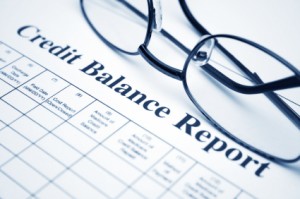 Statistics on credit card companies show that these entities are thriving. This is because most Americans have credit cards.
Statistics on credit card companies show that these entities are thriving. This is because most Americans have credit cards.
Use our FREE credit card chaser to find a credit card that may help reduce your own debt now!
Despite tightened budgets and an unstable economy, credit card use is still going strong in America, strong enough to amass hundreds of billions of dollars worth of debt for consumers. While most American credit card users pay off their debts monthly, that still leaves tens of billions of dollars past due. Consumer credit card use statistics directly impact the companies who lend to them.
Does everyone have a credit card and how much do they use it?
Here are how the statistics on US credit card ownership break down:
- The majority of Americans have one or more than one credit card, although one-third of the population remains without one, according to a 2009 Consumer Reports survey posted on the law firm website of Hoffman, Brinker and Roberts.
- Although 10% of Americans have more than 10 credit cards to their name, the average American has 4 credit cards.
- Of those that do have credit cards, more than half pay off the full amount due each month, while 46% do not.
- The 46% who do not pay off their credit card bills every month consists of 33% who usually owe less than $10,000 with an average balance due of $2,245.
- The 13% who usually owe more than $10,000 have an average balance due of $17,366.
Nearly half of the people surveyed said they have been using their credit cards less frequently, although the majority of 55% did not reduce their credit card usage habits. In fact, 11% said they are using their credit cards to charge more than they did the previous year.
How much debt do American consumers amass?
The 2009 Consumer Report survey put consumer debt at $917 billion, with $69 billion of it past due. Statistics from the Federal Reserve show a decrease in the amount of revolving credit being used. Total revolving credit for 2010 was at approximately $800 billion and the most recent data from October 2011 put the total revolving credit at about $792 billion. The highest credit card debt came in September 2008, with more than $957 billion owed by American consumers.
 Does it matter where you live?
Does it matter where you live?
Although Consumer Reports says the average debt of credit cardholder was at least $5,100, some states have higher average debt rates than others.
Alaska takes the claim as the state with the highest average consumer credit card debt at $7,665. Tennessee takes second place with $7,054 and Nevada comes in third place with an average of $6,517.
Iowa ranks as the state with the lowest average credit card debt with $4,247, followed by the Dakotas. North Dakota ranks second lowest with $4,417 and South Dakota at third lowest with $4,633.
Average credit card debt have also seen increases and drops in several states and regions, with Washington, D.C., seeing the sharpest increase in its residents’ average credit card debt with a climb of 6.3%. Tennessee and Alaska also saw increases in their average debts, rising 2.7% and 2.5%, respectively.
Average credit card debt in Hawaii saw the biggest decreases, with a 2.7% reduction in its residents’ average debt. Utah and Nevada also saw notable decreases, at 2.6 and 2.4%.
How do modern consumers compare to past years?
Americans have been amassing a steady increase in credit card debt over the years. Stats posted on the Hoffman, Brinker and Roberts website note that credit card debt for a household in 1990 averaged $2,966 compared to the 2007 average of $9,840. Other statistics show that:
- The credit debt of consumers was about $8 billion in 1968 compared to the more than $900 billion in 2009.
- Individual debts typically remain under $20,000, with one household out of 50 owing more than $20,000 in credit card bills. Based on the U.S. population, that puts more than 2 million households into the category of owing more than $20,000 in credit card debt.
- People have also been increasingly taking advantage of reward credit cards that amass points they can trade in for plane tickets and merchandise.
- When it comes to getting rid of credit cards, Americans are not shy about closing credit card accounts from companies they say treated them badly. The Consumer Reports survey noted 32% of credit cardholders paid up and closed off an account in the first 11 months of 2009.
- About 50% of the people who cancelled their credit card accounts were reacting to credit card company practices that included fees, increased percentage rates and decreased credit limits.
If you are unhappy with your credit card company, it may be easy to find a new one that better suits your needs. Use the FREE credit card finder to select and compare credit cards now!
Similar Articles:
- What are the largest credit card companies?
- What is the average debt of people who have credit cards?
- When was the first credit card issued?
- Gift Card Inactivity Fees Will Soon be a Thing of the Past (Kind of)
- G.19 Report
- What are the typical credit card rates to expect?
- Are Debt Management/Debt Settlement/Debt Counseling/Consumer Credit Counseling/etc./etc. Services a Scam?








